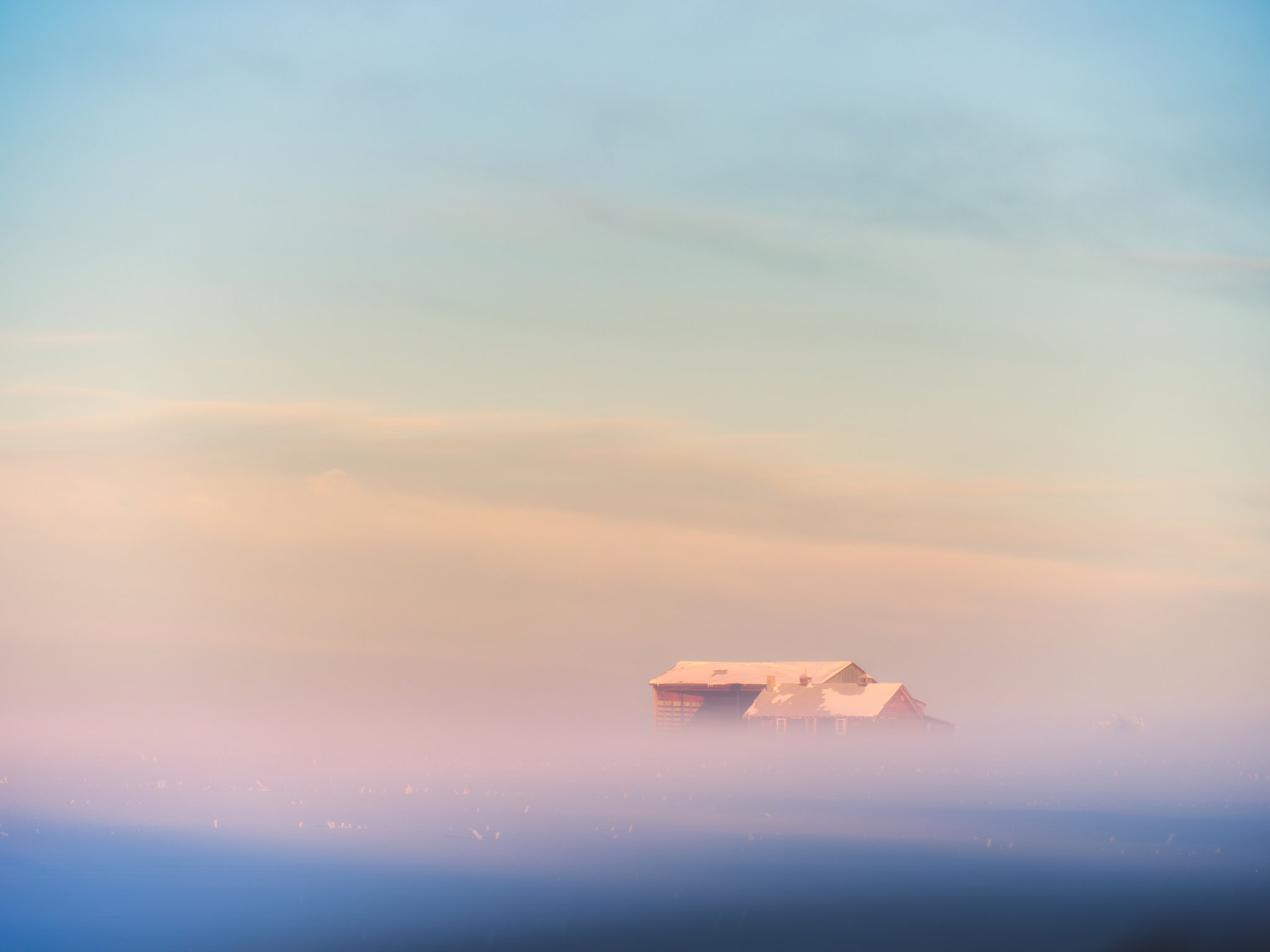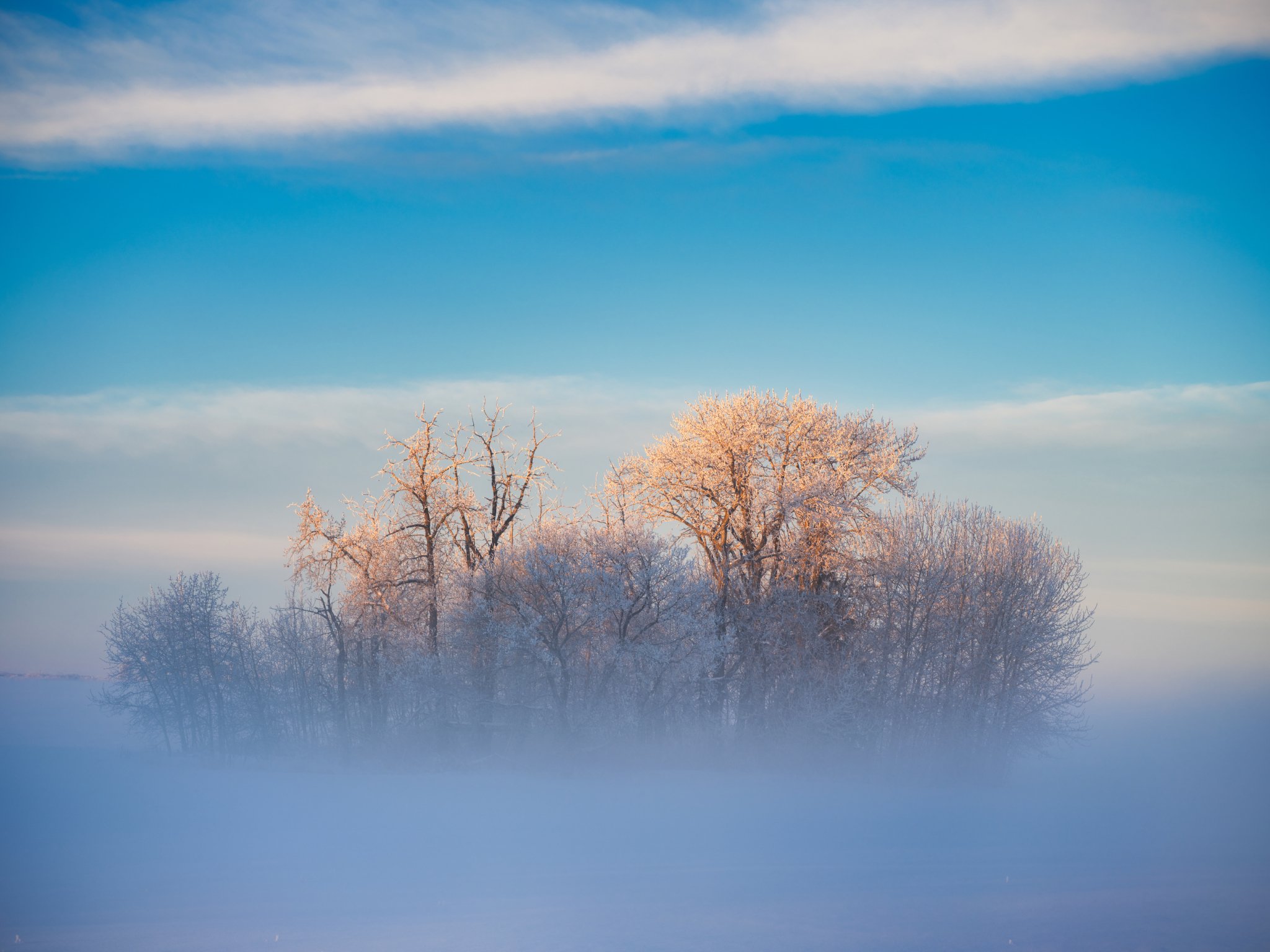Farmland photography: January Update (2023)
As part of my pursuit to photograph Albertan farmlands for the next five years, I have photographed some images that assure my decision. I want to provide monthly updates where I have actively photographed the landscape. Ultimately, at some point in my journey, I wish to interact with the farmers and incorporate them into the photography to tell better stories.
New Year’s Composition
I started the new year with a drive (twice a month photography drive to the farmlands) just before sunrise (I had already lost my sleep and decided to drive instead). I packed my bags with the GFX-100s, the GF 100-200mmF5.6 Lens (Yet to write a review), and the GF 45-100mmF4 Lens (review here). Additionally, I packed the PeakDesign Travel Tripod, which is a bad idea (details in another review later), instead of my much sturdier Manfrotto 055 Aluminium one.
On my drive, I started seeing the pink light coming out of the skies and regretted not being at my target location (I didn’t have any particular site in mind) 30 minutes early to find a beautiful composition that worked with the light.
Contemplatively, I spot a location on the right-hand side of the road, past the fence on a township road. I saw a bunch of frozen trees, and the beautiful light started showing in the background. I changed my direction, took the next exit, and rushed to the place. Once there, I start setting up the tripod for focus bracketing, seeing the site is lit with pink light and the cold foreground (heavy blue). I soon realized I needed to bring a sturdy choice tripod for my farmland photography - especially at its long end (it is pretty wobbly past the first leg). Despite this, I set the tripod, scanned the place quickly to figure out my composition, and then mounted my camera with the GF 100-200mmF5.6 lens at the top.
I am not a fan of Fujifilm’s camera app (I don’t want to take my mobile phone out either), so I carry the remote commander (the guy who designs the GFX-100s deserves applause for moving the remote commander slot to the opposite side - not obstructing the L-Plate).
I captured the beautiful scene in front of me for 15 minutes.
Fire and Ice: A focus stacked version with the sunlight hitting the peaks
I used a focus stacking technique to capture the scene, but I did not like it despite the front-to-back sharpness. However, I liked the next one I photographed using a single shot.
Fire and Ice: Single shot (no focus stacking)
Once done, I packed my gear and kept driving on the Township road, occasionally stopping to photograph the beautiful scene in front of me (or on my side). The Hard rime ice frozen on the trees and the occasional thick fog provided me with many beautiful photographs. The trees looked beautiful with frozen branches with hard rime ice instead of leaves.
After spending more than two hours photographing various landscapes, I reached home satisfied and curious to process the images I photographed.
These are some interesting ones from that day (the best being the single exposure shot of sunrise pink colors in the background and a cold blue foreground).
My second drive for January
My next drive was a week later, on another Sunday morning. I decided to drive further from the same place and much early. I had photographed this and regretted not being at the location when there was a full moon. Hence, I decided to keep the moon as the main subject and compose everything else around it for that day (it was a full moon day).
Unfortunately, since I was not there for the nighttime photography (the star trail, etc.), it was a too-blue hour for my taste for the general compositions I find in such locations. However, I did find a beautiful and simplistic composition towards the tail end of my drive. I spent the next 45 minutes photographing it. The pink color was absent that day, and it was a completely blue hour all along until the sun started shining.
The blue hour
I kept my composition to the bare minimum, retaining only enough objects in my frame. The beauty of the Albertan winter is that nature greatly simplifies your composition, forcing you to simplify your photograph by incorporating a lot of negative space.
After spending another two hours that day, I drove home with at least one good photograph I could retain and a few more acceptable ones. The picture below is one takeaway from that day that forced me to post-process many times to get the desired results. I wanted to retain the moon sharp and have some details but also lose darkness in the foreground. I photographed using focus stacking, focusing the moon on the last image to get it sharp. I also adjusted my exposure for the moon, the brightest in the photograph.
I used helicon focus to put them together. However, the moon’s minor change in position resulted in an undesired effect after the stack. The options are to use Affinity Photo (I don’t use Adobe suite yet - something that might soon change thanks to Capture One Pro’s new change) to mask that layer to ensure the moon remains sharp. Or, remove the moon in all the other shots except the last one and then merge. I chose the second option, which turned out well in the post-processing. However, it is mainly blue and void of any other color.
Hence, after much deliberation, I changed it to black & whiteish, which looked better. The photograph works for me despite the vast empty space because the moon compensates for the blank space. Otherwise, the composition would look like the one below without any drama in the sky.
The blue hour: Monochrome
These are some interesting ones from that day (the best being the one you see above).
The third visit was the following Sunday in another location. I struggled to find a simple and good composition for this trip resulting in no portfolio-worthy photographs. It was cloudy (white all over), and the opposite side, where it had a dramatic sunrise, did not have any exciting foreground.
I don’t think I will have much in February except the last Sunday because I am traveling to another province. Nevertheless, watch out for this space for more.












